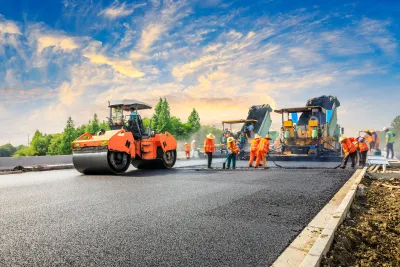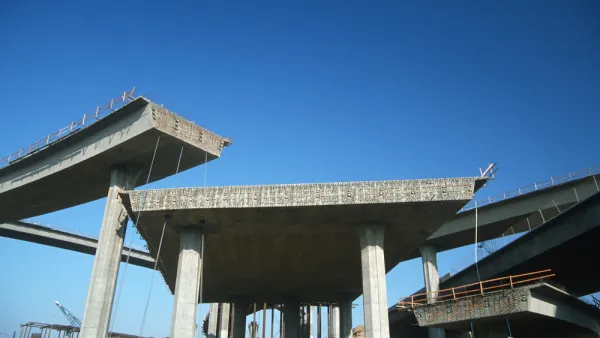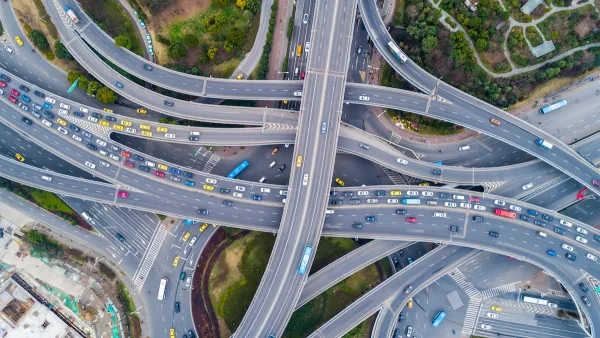A new report says states are creating a “climate time bomb” by spending more than half of federal infrastructure dollars on highway resurfacing and expansion over transit and passenger rail.

When it was passed in 2021, the $1.2 trillion Bipartisan Infrastructure Law was touted as a once-in-a-generation investment in the nation’s infrastructure, from ports, airports, rail, and roads to clean water, internet, and public transit — all with a focus on climate mitigation and resilience, equity, and safety.
However, of the reported funds disbursed to states, more than half (around $70 billion) has gone to resurfacing and expanding highways and just one-fifth has gone to public transit, reports Oliver Milman for the Guardian, citing a new analysis from transport policy group Transportation from America.
The Transportation from America report calls the spending a “climate time bomb” that it says will lead to greenhouse gas emissions of more than 178 million tons from planned highway expansions alone by 2040, only slightly offset by emissions-reducing measures funded by the bill.
“Nothing is fundamentally changing in terms of modes of transport. This much money going into highway expansion is, for one, a liability into the future, and two, it just doesn’t work. We’ve been expanding highways for decades on decades, and everyone consistently finds themselves stuck in traffic,” Corrigan Salerno, policy associate at Transportation for America told the Guardian.
FULL STORY: US spends billions on roads rather than public transport in ‘climate time bomb’

National Parks Layoffs Will Cause Communities to Lose Billions
Thousands of essential park workers were laid off this week, just before the busy spring break season.

Retro-silient?: America’s First “Eco-burb,” The Woodlands Turns 50
A master-planned community north of Houston offers lessons on green infrastructure and resilient design, but falls short of its founder’s lofty affordability and walkability goals.

Delivering for America Plan Will Downgrade Mail Service in at Least 49.5 Percent of Zip Codes
Republican and Democrat lawmakers criticize the plan for its disproportionate negative impact on rural communities.

Test News Post 1
This is a summary

Test News Headline 46
Test for the image on the front page.

Balancing Bombs and Butterflies: How the National Guard Protects a Rare Species
The National Guard at Fort Indiantown Gap uses GIS technology and land management strategies to balance military training with conservation efforts, ensuring the survival of the rare eastern regal fritillary butterfly.
Urban Design for Planners 1: Software Tools
This six-course series explores essential urban design concepts using open source software and equips planners with the tools they need to participate fully in the urban design process.
Planning for Universal Design
Learn the tools for implementing Universal Design in planning regulations.
EMC Planning Group, Inc.
Planetizen
Planetizen
Mpact (formerly Rail~Volution)
Great Falls Development Authority, Inc.
HUDs Office of Policy Development and Research
NYU Wagner Graduate School of Public Service





























